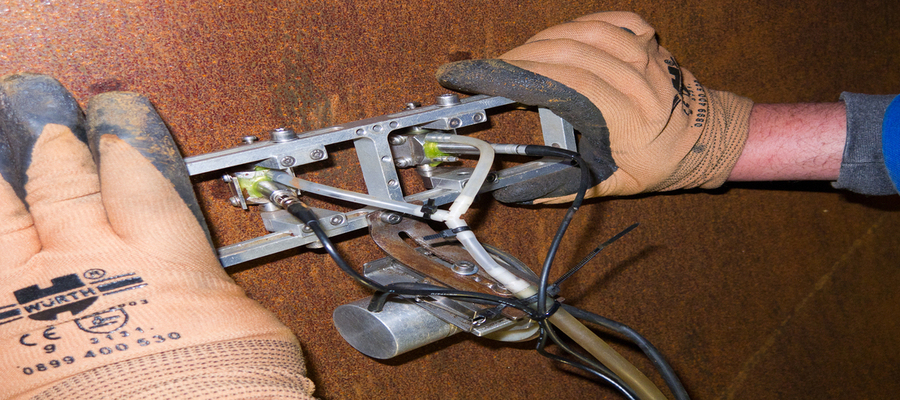
Phased array ultrasonic (PA) is an advanced method of ultrasonic testing that has applications in medical imaging and industrial nondestructive testing. Common applications are to non invasively examine the heart or to find flaws in manufactured materials such as welds. Single-element (non-phased array) probes, known technically as monolithic probes, emit a beam in a fixed direction. To test or interrogate a large volume of material, a conventional probe must be physically scanned (moved or turned) to sweep the beam through the area of interest. In contrast, the beam from a phased array probe can be moved electronically, without moving the probe, and can be swept through a wide volume of material at high speed. The beam is controllable because a phased array probe is made up of multiple small elements, each of which can be pulsed individually at a computer-calculated timing. The term phased refers to the timing, and the term array refers to the multiple elements. Phased array ultrasonic testing is based on principles of wave physics, which also have applications in fields such as optics and electromagnetic antennae.
The PA probe consists of many small ultrasonic transducers, each of which can be pulsed independently. By varying the timing, for instance by pulsing the elements one by one in sequence along a row, a pattern of constructive interference is set up that result in a beam at a set angle. In other words, the beam can be steered electronically. The beam is swept like a search-light through the tissue or object being examined, and the data from multiple beams are put together to make a visual image showing a slice through the object.
Phased array is widely used in several industrial sectors, such as construction or power generation. This method is an advanced NDT method that is used to detect component failures i.e. cracks or flaws and thereby determine component quality. Due to the possibility to control parameters such as beam angle and focal distance, this method is very efficient regarding the defect detection and speed of testing.[1] Apart from detecting flaws in components, phased array can also be used for wall thickness measurements in conjunction with corrosion testing Phased array can be used for the following industrial purposes :
- Inspection of Welds
- Thickness measurements
- Corrosion inspection
- Flaw detection
At a construction site, a technician tests a pipeline weld for defects using an ultrasonic phased array instrument. The scanner, which consists of a frame with magnetic wheels, holds the probe in contact with the pipe by a spring. The wet area is the ultrasonic couplant that allows the sound to pass into the pipe wall.
- The method most commonly used for medical ultrasonography.
- Multiple probe elements produce a steerable, tightly focused, high-resolution beam.
- Produces an image that shows a slice through the object.
- Compared to conventional, single-element ultrasonic testing systems, PA instruments and probes are more complex and expensive.
- In industry, PA technicians require more experience and training than conventional UT technicians.
- EN 16018, Non destructive testing - Terminology - Terms used in ultrasonic testing with phased arrays
- ISO/WD 13588 - EN 13588, Non-destructive testing of welds – Ultrasonic testing – Use of (semi-) automated phased array technology








